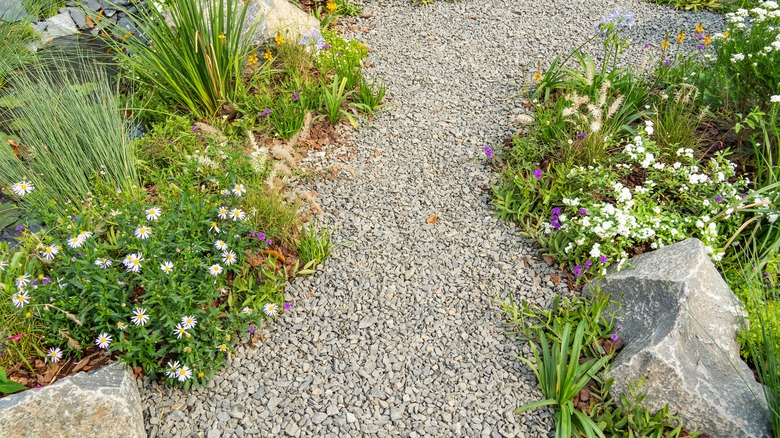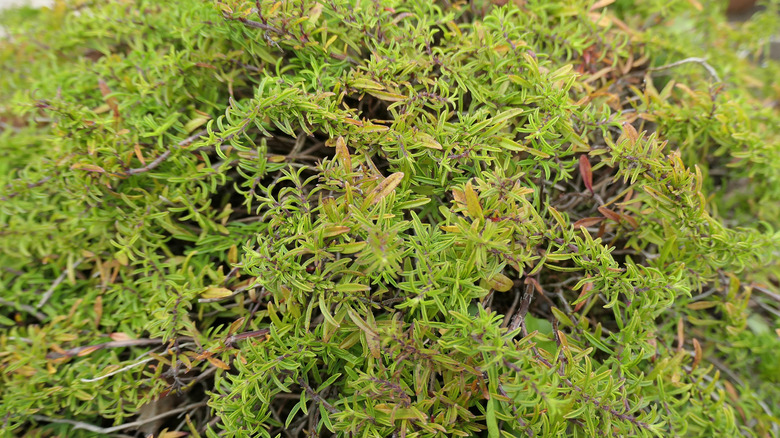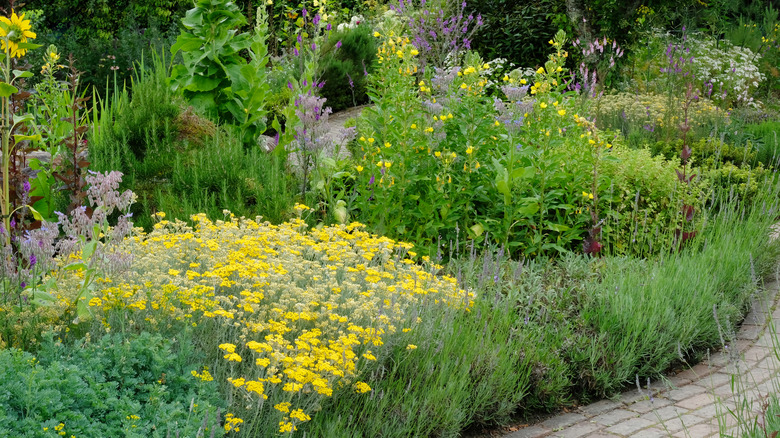The Underrated Herb That Covers Your Tricky Landscape Problems
There are some landscaping spots that call for a ground cover that's distinct from a main lawn. Gardeners often turn areas that are sloping or have poor soil into rock gardens, transforming a challenging situation into a wonderland of weathered rocks, wildflowers, and resilient herbs. These are places you'll want your ground cover to be low maintenance. A popular choice is to use creeping plants, which are durable and provide a delicate counterpart to the hard look of rocks. And there's one herb that is often overlooked but perfect for blanketing rocky soil: creeping savory (Satureja spicigera).
This edible perennial herb grows low to the ground in mats, reaching around 4 inches high. Small white flowers bloom from creeping thyme in the summer. Once it has settled in, there's little need to keep on top of watering your creeping savory or to fuss over the soil quality, as it's well adapted to dry conditions and rocky soil, but it does not grow well in shady spots. For a shaded garden, it's worth looking into other options, like hardy ferns, a ground cover that's perfect for areas where grass won't grow.
How to plant creeping savory
Plant creeping savory outdoors, whether in your rock garden or as a border, in USDA hardiness zones 6 through 9 for best results. Although the soil doesn't need specific nutrients, it should be well-draining. This type of savory can be started from seed at the beginning of spring, but its seeds aren't always as easy to find as those of summer savory (Satureja hortensis) and winter savory (Satureja montana). Luckily, creeping savory is one of the delicious herbs you can easily propagate from the cuttings of potted plants sold at nurseries.
The propagating process starts with cutting a healthy stem off the plant below a leaf node and stripping off most of the leaves. After the stem is dipped in a rooting hormone and then covered with well-draining soil in a pot, it's ready to take root in a few weeks. Once the plants have grown to a good size, place them in the outdoor soil about 12 inches apart. In the late winter, you will want to prune the plants to keep them flourishing.
Benefits of creeping savory beyond ground cover
If your planting project results in an abundance of creeping savory, you can use it as an herb to add a ... well ... savory component to dishes. The leaves have a strong and peppery flavor and can be used fresh or dried. It's also a great ingredient in an herb garden if you plant it together with drought-tolerant herbs like thyme (Thymus vulgaris) and rosemary (Salvia rosmarinus). Make sure to harvest the leaves before the plants form their flowers.
While appealing to humans, savory is an aromatic plant not enjoyed by deer, making it effective in discouraging them from exploring further into your space. Pair it with mint (Mentha spicata) and lavender (Lavandula spp.) to make a deer-deterring and beautiful border. As an added bonus, when they are flowering, they'll attract bees and their fellow pollinators to your garden.


